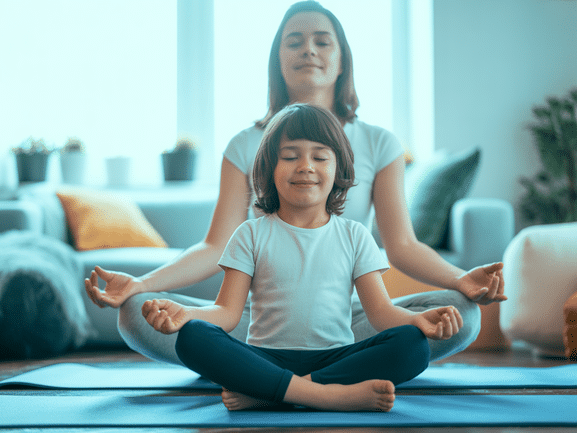Yoga Philosophy for Kids: Simple Spiritual Practices That Transform Young Minds
Why Yoga Philosophy Matters for Young People
In today’s fast-paced world, children and teenagers face unique challenges – from academic pressure to social media stress. However, yoga philosophy offers timeless tools that can help young minds navigate these challenges with grace and wisdom.
Think of yoga philosophy as a life manual that teaches us how to be happy, kind, and strong from the inside out. It’s not about religion – it’s about developing character, emotional intelligence, and a deep sense of self-worth.
What Makes Yoga Philosophy Special for Kids?
- Simple wisdom: Ancient teachings presented in kid-friendly ways
- Practical tools: Real strategies for handling emotions and stress
- Character building: Values like kindness, honesty, and self-discipline
- Mind-body connection: Understanding how thoughts affect feelings and actions
The Building Blocks of Yoga Philosophy (Made Simple!)
The Yamas: How to Be Kind to Others
The Yamas are like the “golden rules” of yoga. They teach us how to treat others with respect and kindness:
- Ahimsa (Non-violence): Being gentle with words and actions – no bullying!
- Satya (Truthfulness): Always telling the truth, even when it’s hard
- Asteya (Non-stealing): Not taking things that don’t belong to us
- Brahmacharya (Energy conservation): Using our energy wisely
- Aparigraha (Non-possessiveness): Being grateful for what we have
The Niyamas: How to Take Care of Yourself
While Yamas focus on how we treat others, Niyamas teach us self-care and personal growth:
- Saucha (Cleanliness): Keeping our body, mind, and space clean
- Santosha (Contentment): Finding happiness in the present moment
- Tapas (Discipline): Practicing self-control and dedication
- Svadhyaya (Self-study): Learning about ourselves and the world
- Ishvara Pranidhana (Surrender): Letting go of things we can’t control
Amazing Benefits of Yoga Philosophy for Young Minds
Research shows that children and teenagers who practice yoga philosophy experience remarkable improvements in various aspects of their lives. Furthermore, these benefits extend far beyond the yoga mat, positively impacting their daily interactions and academic performance.
Emotional Benefits
- Better emotional regulation: Learning to handle anger, fear, and frustration
- Increased self-confidence: Developing a strong sense of self-worth
- Improved empathy: Understanding and caring for others’ feelings
Mental Benefits
- Enhanced focus: Better concentration in school and activities
- Stress reduction: Natural ways to calm the mind
- Creative thinking: Opening the mind to new possibilities
Additionally, many parents report that their children become more cooperative, patient, and resilient after incorporating these practices into their daily routine. Start your child’s journey with age-appropriate content designed specifically for young practitioners.
Simple Spiritual Practices for Kids and Teens
The beauty of yoga philosophy lies in its practical application. Here are some simple, yet powerful practices that can be easily incorporated into a young person’s daily routine:
Morning Gratitude Practice
Super Simple Start: Every morning, think of three things you’re grateful for. It could be your pet, a friend, or even your favorite snack! This practice helps develop Santosha (contentment).
Breathing Buddies Meditation
Place a small stuffed animal on your belly while lying down. Watch it rise and fall with your breath. This teaches mindfulness while making meditation fun and accessible for younger children.
Kindness Challenge
Try to do one kind act each day without telling anyone. This secretly powerful practice develops Ahimsa (non-violence) and Karma Yoga (selfless service).
For more structured guidance and age-appropriate practices, explore the comprehensive programs available at Vitalizen.app, where content is specifically curated for different age groups and experience levels.
How Vitalizen Makes Yoga Philosophy Accessible
Unlike generic yoga programs, Vitalizen.app understands that children and teenagers need specially designed content

